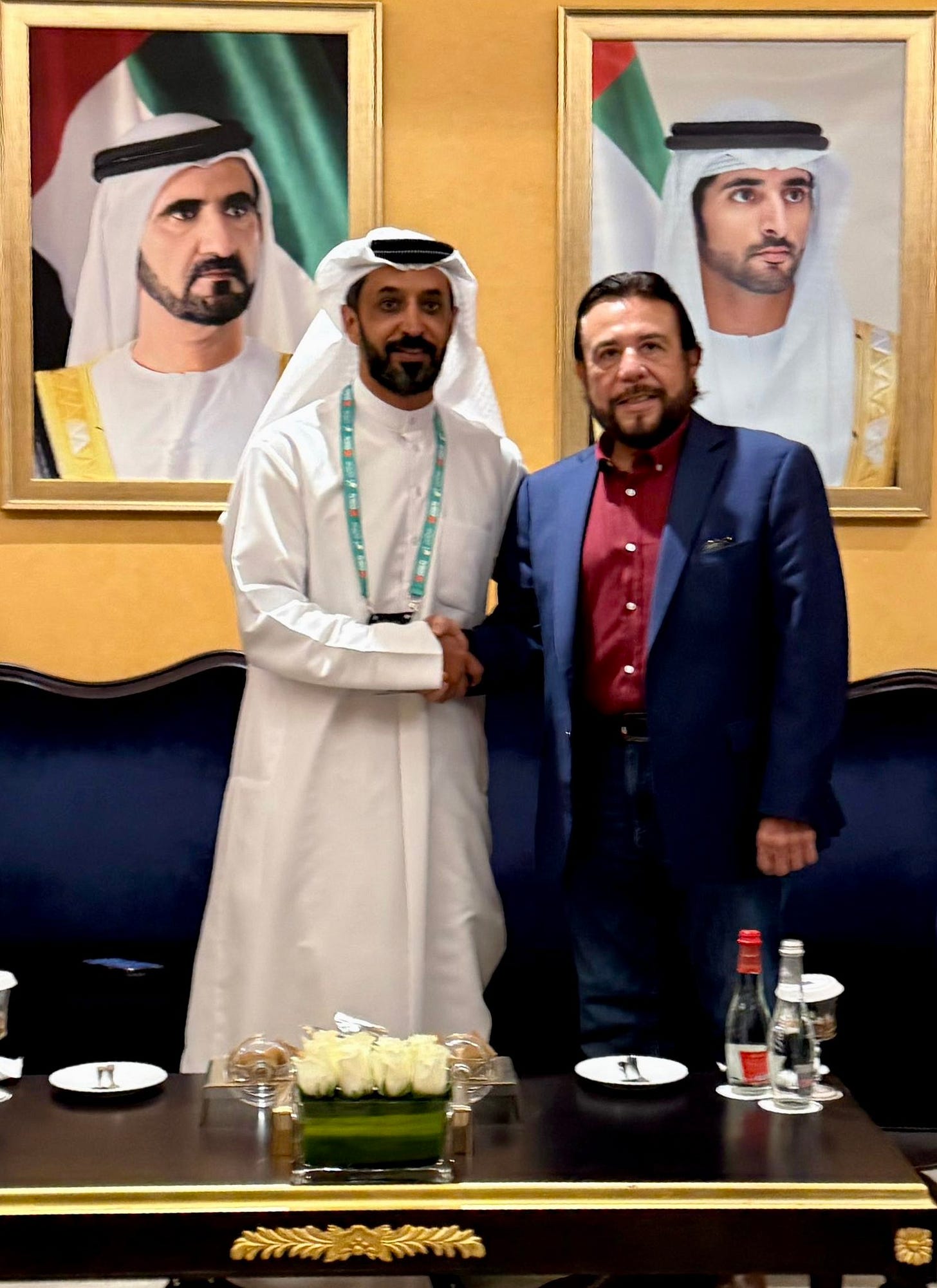There is a great deal to say about my Senator, Chris Van Hollen’s, constituent service work last week. He visited an illegally incarcerated Maryland resident in El Salvador. But as a Veepologist, I took note that Van Hollen initially met with El Salvador’s vice president Félix Ullua. The VP ran interference with Van Hollen, before the government relented and allowed the U.S. Senator to meet with his constituent.
Much has been written about El Salvador’s President Nayib Bukele, who has designated himself: “the world’s coolest dictator.” Besides renting out his nation as a prison for the U.S., Bukele has espoused cryptocurrency, made enormous strides in controlling El Salvador’s terrifying levels of violent crime through mass incarceration, while also undermining the foundations of El Salvador’s fragile democracy.
As a Veepologist though, I different questions. What are the formal and historical roles of El Salvador’s vice presidents? What role does VP Ullua play in the orbit of the larger than like Bukele?

Background
The office of the vice presidency goes back to the foundation of the state of El Salvador in 1841. Most of the nations of Latin America adopted a constitution like that of the U.S. with separate branches of government and a presidential system. El Salvador is no exception. Alas, I lack the time to go back through the entire history of VPs in El Salvador. I believe examining who becomes VP and how, along with what the VP does, can provide an interesting window into a nation’s history. Some other time. For now, we’ll focus on the recent VPs of El Salvador.
First, looking over the Constitution, the VP of El Salvador doesn’t have any formal responsibilities. They don’t preside over the legislature. Their primary role is to be back-up equipment. (It does look like some have held cabinet positions while VP.)
There is one strange little quirk. According to the Constitution, the President and VP cannot run for a second term. But Bukele, ahem, had the Constitution re-interpreted so that he and Ullua can evade this. The two of them resigned briefly, six months before the election, and then ran again. They were re-elected with an overwhelming majority (almost 85% of the popular vote). This analysis courtesy of Tim Muth who blogs at El Salvador Perspectives.
The Veeps of El Salvador, from an institutional perspective, look like their counterparts here in El Norte. They appear to be chosen for ticket balancing. For example, Mauricio Funes (president from 2009-2014), was a leftist journalist and the nominee of the FMLN (which had been the rebels in El Salvador’s civil war of the 1970s to 1990s). Funes had not been a guerilla fighter himself. This made him suspect among the party cadres, so he selected Salvador Sanchez Ceren, who had guerilla credentials as a running mate.
El Salvador’s vice presidents take on commissions and projects for the president. Ana Vilma de Escobar, the first (and so far only) woman to serve as VP, led commissions on exports and economic development.
Again similar to the U.S., the vice presidency has not been a surefire path to the presidency. In recent years only Salvador Sanchez Ceren became president after serving in the number two role.
Vice President Ullua
Ullua is an interesting figure. He’s a technocrat with several degrees from universities in the U.S. and Europe. He’s worked on commissions and been a magistrate. He’s associated with El Salvador’s left. His father was a university rector murdered by a right-wing death squad. He was probably selected by Bukele as a running mate both to reach some traditional left constituencies and to be an elder statesman counterpart to the youthful Bukele.
He is an unlikely successor to Bukele, as Bukele is 43 and Ullua is 74. Anyway, Bukele is unbelievably popular and appears likely to be re-elected for some time to come.
Early in their first term Ullua was assigned commission work including setting up International Commission against Impunity in El Salvador (CiCIES), which was established in coordination with the Organization of American States and U.S. to combat corruption. Ullua also led a Constitutional reform effort. Nothing came of either effort. Bukele broke relations with CiCIES and adopted a different approach to Constitutional reforms that allows him to consolidate power. Ullua is El Salvador’s representative on the Trifinio Commission, a trilateral vice-presidential commission with Guatemala and Honduras to protect the sensitive eco-system where the three nations meet . It’s all very vice presidential.
Ullua has taken on the spokesperson/diplomatic duties that come to the vice presidency. In two of the Bukele profiles cited above, Ullua was the only Salvadoran government official willing to speak on the record. He’s travelled widely, attending the coronation of King Charles. Naturally, his message very much reinforces that of the president: praising cryptocurrency, defending the government against accusations of human rights violations, and generally representing El Salvador to critics that Bukele doesn’t want to talk to.
Handling Senator Van Hollen fits neatly in these roles. It was an unpleasant diplomatic task, the president didn’t want to do it. But you can’t pawn a U.S. Senator off on a functionary.
So far, Ullua’s role appears in line with vice presidents in the U.S. A mix of substantial and ceremonial duties, and a lot of communication with stakeholders (at home and abroad.) There is no particular evidence that Ullua is a member of Bukele’s inner circle of advisors.
One question of Veepology is whether the VP plays different types of roles in different regimes. Are the VPs in dictatorships different from the VPs in democracies? El Salvador has rapidly descended to illiberal democracy, so how does that shape the role of the vice president?
As always, this post reflects my opinions and analysis only! It does not reflect the views of any organization with which I am or have been affiliated.






